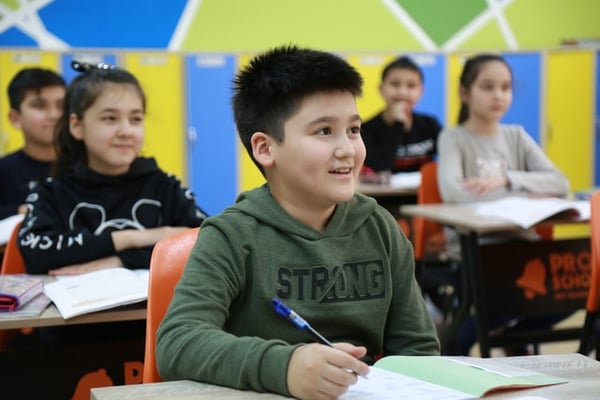Managing Conflicts in the Classroom
by Brianna Richard, on Oct 13, 2021 4:50:36 PM
Your students have just walked back into the classroom after lunch. You have a fantastic lesson ready, the kids are at their desks and you are ready to teach. You gather your materials and are standing at the front of the classroom when you notice something is off. Maybe there are a few students whose faces are tear-stained or sitting with scowls at their desks. Maybe there is a line of students at your desk that need to vent. Or worst-case scenario, perhaps they have walked back into the classroom arguing. No matter what the situation may be, classroom conflicts happen and are absolutely unavoidable.
 Photo by Kuanish Reymbaev on Unsplash
Photo by Kuanish Reymbaev on Unsplash
Regardless of what has caused the conflict, as educators, it is our job to help our students solve them. It is our responsibility to use the conflict as a teachable moment and give students the tools to work through uncomfortable arguments with classmates. Before conflicts happen it is important to have a plan in place. School psychologist, Laura Driscoll, has a six-step approach to calm classroom conflicts and overcome arguments.
1. Take Time to Cool Down
The first step is to give students time to cool down. When students are rushing into the classroom after recess they often want to immediately discuss what happened and give details about arguments. Encourage them to first go to their desks for a bit to cool down.
2. Share and listen
After students have calmed down, bring them together to talk about what happened. Driscoll encourages students to use “I” statements to explain what happened. Ask students to think about how they could have handled the situation in a different way or how the conflict affected the class as a whole.
3. Take Responsibility
Once students have shared their perspectives, it is time they shared some responsibility for what happened. Not all responsibility needs to be equal!
For example, Jordan is upset that Rachel wanted to play tag at recess. Jordan can take responsibility and apologize for trying to make Rachel play a game she does not want to play. Rachel does not have to play what Jordan wants but could take responsibility for not telling Jordan she does not want to play in a nice way.
4. Make a list of solutions
Students should work together to think of some solutions. Encourage students to think of solutions that could benefit everyone. Ask questions like, “What could you have done differently?” or “How would this solution help to make everyone happy?”
5. Choose a Solution
After students have come up with a list of solutions, have them agree upon one.
Encourage them to pick the solution that will best avoid future problems.
6. Affirm, Forgive, Thank
This is one of the most important parts of conflict resolution. Have the students take some time to affirm one another, forgive one another, and thank one another. I like to teach what it means to do each of these things to the entire class so when conflicts arise they are already prepared to thank one another for working through conflicts and affirm that each other’s feelings are valid.
Have you had conflicts in your classroom this year? What strategies have you used to calm things down and achieve peace? Leave a comment below.
Sources:
- Driscoll, Laura (2017). Teaching conflict resolution skills.



